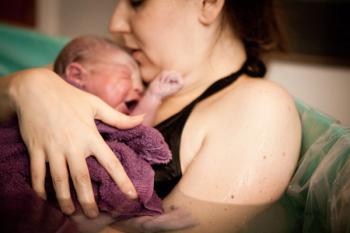A method of determining preterm birth risk through ultrasound has been developed, according to a recent study published in the American Journal of Obstetrics & Gynecology Maternal Fetal Medicine.1
Takeaways
- Traditional methods of determining preterm birth risk rely on prior pregnancy history, which excludes first-time pregnant women from accurate risk assessment.
- Researchers at UIC and University of Illinois Urbana-Champaign devised a new ultrasound technique to assess preterm birth risk by measuring microstructural changes in the cervix.
- The ultrasound method allows for preterm birth risk assessment as early as 23 weeks into pregnancy, enabling timely interventions and decision-making.
- Unlike relying solely on signs and symptoms of preterm birth, this new technique allows clinicians to make decisions based on tissue characteristics, potentially leading to more proactive management.
- Incorporating quantitative ultrasound features into predictive models significantly enhances risk prediction compared to relying solely on historical clinical features, indicating the potential for better outcomes through early intervention or prevention strategies.
Preterm birth occurs in up to 10% of US pregnancies, and current methods determine preterm birth risk based on whether a woman has given birth prematurely in prior pregnancies. This prevents preterm birth risk assessment in women with first-time pregnancies.
Investigators at University of Illinois Chicago (UIC) and University of Illinois Urbana-Champaign developed a novel method for assessing preterm birth risk. Using the ultrasound method, clinicians can measure microstructural changes in a woman’s cervix, allowing preterm birth risk assessment as 23 weeks into pregnancy.
“Today, clinicians wait for signs and symptoms of a preterm birth,” such as a ruptured membrane, said lead author Barbara McFarlin, PhD, professor emeritus of nursing at UIC. “Our technique would be helpful in making decisions based on the tissue and not just on symptoms.”
The study included a standard clinical screening and 2 research screenings at 20 ± 2 weeks and 24 ± 2 weeks, during which diagnostic medical sonographers conducted quantitative ultrasound scans using a standard cervical length approach.2 Outcomes included full-term births and spontaneous preterm births. Exclusion criteria included medically indicated preterm birth.
The estimated receiver operating characteristic area under the curve for the most accurate predictive model using historical clinical features only was 0.56 ± 0.03. This was improved in a predictive model using historical clinical and quantitative ultrasound features, with an area under the curve of 0.63 ± 0.03 at visit 1 and 0.69 ± 0.03 at visit 2.
These results indicated risk prediction is significantly improved using quantitative ultrasound. Investigators concluded knowledge of preterm birth risk at 23 weeks may allow preterm birth to be delayed or prevented.
Reference
- Ultrasounds can help predict the risk of preterm births, new research shows. EurekAlert. January 24, 2024. Accessed February 9, 2024. https://www.eurekalert.org/news-releases/1032200
- McFarlin BL, Villegas-Downs M, Mohammadi M, Han A, Simpson DG, O’Brien WD. Enhanced identification of at-risk women for preterm birth via quantitative ultrasound: A prospective cohort study. American Journal of Obstetrics & Gynecology Maternal Fetal Medicine. 2024. doi:10.1016/j.ajogmf.2023.101250












